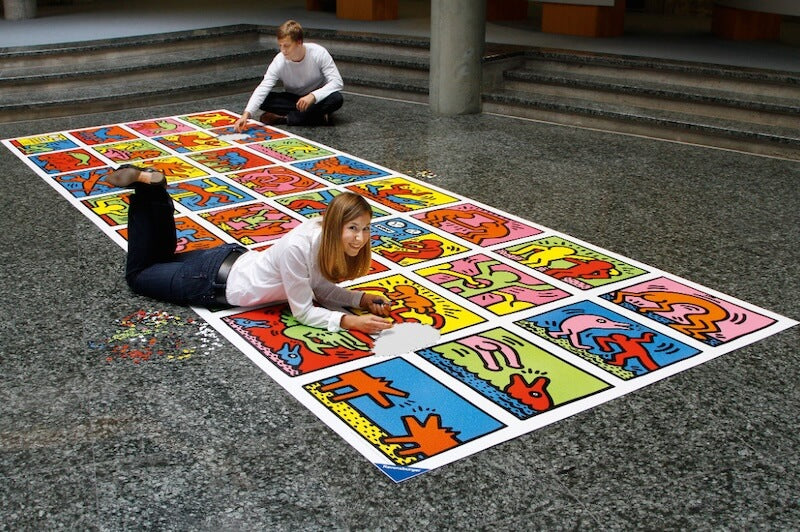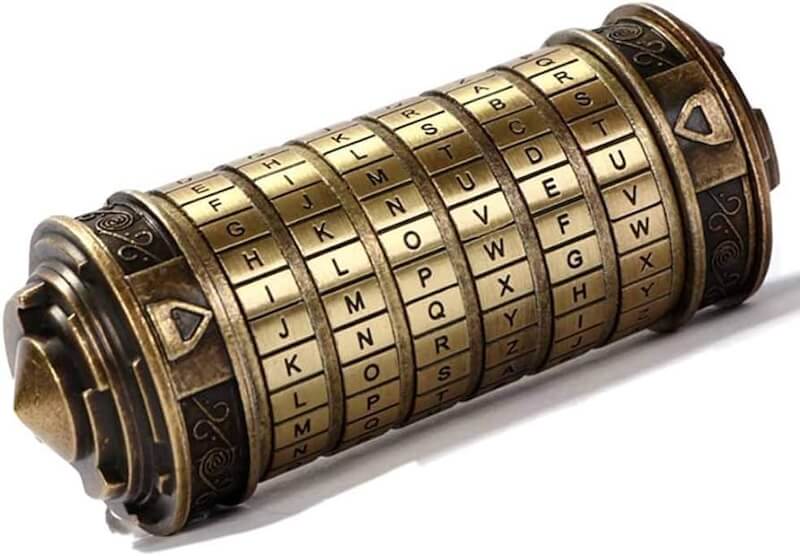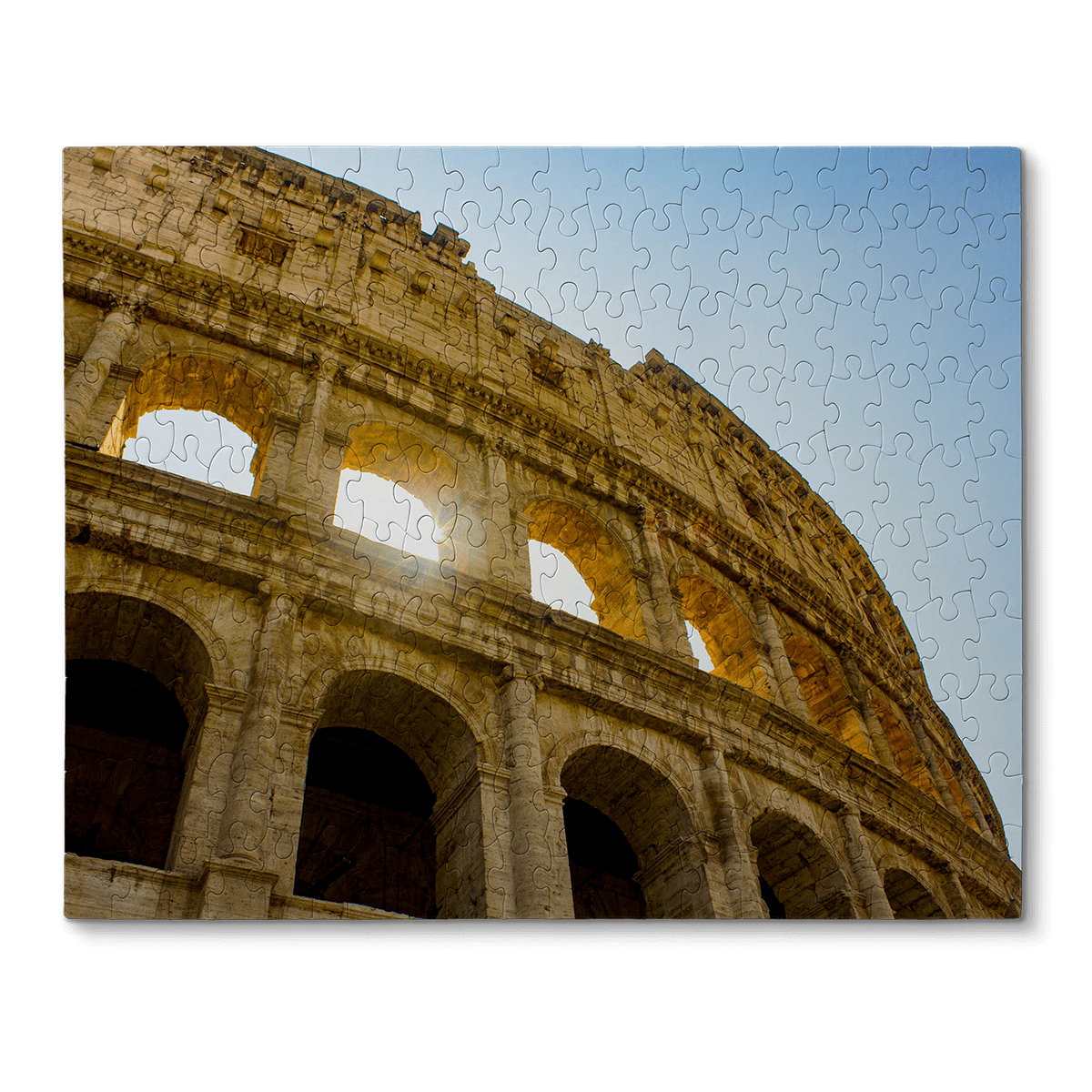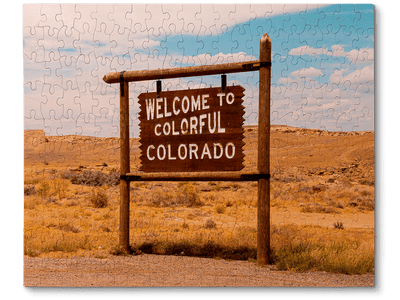The history of puzzles and their origins
Puzzles have challenged minds for millennia. From ancient labyrinths to modern jigsaws, they reflect our evolution of thought and creativity. This journey through puzzle history will transform how you see each piece you place — and why that satisfaction runs so deep.
Table of Contents
- 🌍 Early origins of puzzles
- The very first puzzles: Tracing back to ancient civilizations
- Dissected maps: The birth of the modern puzzle
- 📈 Evolution of jigsaw puzzles
- 🎨 Cultural impact of puzzles
- 🧠 Benefits of puzzles
- 🌐 Puzzles around the world
- 🛠 How puzzles are made today
- 🔄 Conclusion and next steps
🌍 Early origins of puzzles
Curiosity about the early origins of puzzles takes us back to the cradle of civilization itself. Imagine ancient humans, much like us, using puzzles not only as a means of entertainment but also as tools for problem-solving and education. These early puzzles were often rooted in the need to navigate the challenges of survival and communication. As we delve deeper into specific examples and stories, we'll see just how integral puzzles were to early human societies and how they laid the groundwork for the complex puzzle designs we enjoy today.
The very first puzzles: Tracing back to ancient civilizations
The story of puzzles begins in the mists of antiquity. The earliest puzzles were not just for fun; they served as tools for education and communication across ancient civilizations. For instance, the Sumerians, who thrived in Mesopotamia around 3500 BC, utilized clay tablets that featured complex riddles and word games to train and test their scribes. Similarly, in ancient Egypt, puzzles often took the form of intricate hieroglyphs that required both linguistic and mathematical prowess to decode.
These early puzzles were integral to the cultural and intellectual life of these societies, helping to sharpen the minds of scholars, scribes, and even rulers. They fostered critical thinking and problem-solving skills that were crucial for leadership and development. It's fascinating to think that the joy and challenge of puzzles have been a part of human experience for thousands of years, transcending borders and epochs.
Dissected maps: The birth of the modern puzzle
As we trace the lineage of puzzles into the 18th century, we encounter a pivotal innovation that marked the birth of the modern puzzle: the dissected map. Invented by British cartographer John Spilsbury in 1766, these first map puzzles were originally intended as educational tools to aid in teaching geography to children. Spilsbury mounted maps on wood, cutting along national boundaries to create the first jigsaw puzzles. This method not only made learning geography more interactive but also sparked a new form of entertainment.
Invented by British cartographer John Spilsbury in 1766, these first map puzzles were originally intended as educational tools to aid in teaching geography to children.
The concept quickly caught on, transforming from a classroom aid into a popular leisure activity for both adults and children. It's fascinating to see how these early educational tools evolved into the complex and artistic jigsaw puzzles we cherish today.
📈 Evolution of jigsaw puzzles
As we've seen, the journey of jigsaw puzzles began with educational intentions, but it didn't stop there. The evolution of jigsaw puzzles is a fascinating tale of creativity and innovation that spans centuries. From wooden maps to the intricate and artistic designs we see today, each step in the evolution of these puzzles reflects changes not only in technology but also in societal needs and leisure activities. This transformation showcases the adaptability and enduring appeal of jigsaw puzzles, making them more than just a pastime but a dynamic part of our cultural heritage.
From wood to cardboard: The transformation over centuries
The shift from wood to cardboard in puzzle manufacturing marks a significant chapter in the history of jigsaw puzzles. Initially, puzzles were handcrafted from wood, meticulously sawed by artisans who ensured each piece fit perfectly. This method, while producing durable and heirloom-quality puzzles, was labor-intensive and costly. As the 20th century dawned, manufacturers sought more efficient ways to produce puzzles to meet growing demand.
Enter cardboard, a lighter, more cost-effective material. By the 1930s, die-cut cardboard puzzles had become mainstream, thanks to advances in printing and cutting technology. This shift made puzzles accessible to the masses, not just the affluent. It also allowed for greater variety and more frequent updates to puzzle designs, reflecting contemporary interests and ensuring puzzles remained a popular form of entertainment. The evolution from wood to cardboard was not just a change in material but a democratization of puzzling, allowing more people to enjoy the challenge and joy puzzles provide.
Notable jigsaw puzzles in history
Throughout the centuries, certain jigsaw puzzles have stood out not only for their complexity but also for their cultural and historical significance. These puzzles tell stories, encapsulate eras, and challenge the norms of their times. For instance, the "Double Retrospect" by Keith Haring, a staggering 32,256-piece puzzle, holds the Guinness World Record for the largest jigsaw puzzle ever made. It's a vibrant and playful testament to Haring's impactful art style, which continues to influence and inspire.

Another historically significant puzzle is the "Around the World" puzzle from the early 20th century. This puzzle, featuring a map of the world, was used during a time when public interest in geography and world cultures was skyrocketing due to advances in travel and communication. It not only served as a fun family activity but also as an educational tool, helping to broaden people's understanding of the world during an era of exploration and discovery.
These notable puzzles are not just games; they are a reflection of the times and societies in which they were created. They remind us that each piece of a puzzle can hold a wealth of history and significance, waiting to be pieced together by curious minds.
🎨 Cultural impact of puzzles
Puzzles do more than just entertain; they weave themselves into the fabric of our culture, influencing education, art, and media. As we explore the various ways puzzles have touched our lives, it becomes clear that their impact is both profound and far-reaching. From the classrooms where young minds are shaped to the art galleries that challenge our perceptions, puzzles have a unique way of crossing boundaries and bringing people together. Let's delve into how puzzles have shaped learning and popular culture, enriching our experiences and understanding of the world.
Puzzles in education and learning
It's no secret that puzzles play a pivotal role in educational settings, stretching beyond mere amusement to become key tools in cognitive development and learning strategies. From the classrooms of the youngest learners to adult education centers, puzzles serve as a bridge between theoretical knowledge and practical application, making complex ideas more accessible and engaging.
Consider the way puzzles introduce young children to concepts of geometry, spatial awareness, and problem-solving. Each piece of a puzzle challenges the solver to think critically about where it fits in the larger picture, mirroring the skills needed in subjects such as math and science. For older students and adults, puzzles like crosswords and Sudoku enhance vocabulary and numerical skills, while also improving memory and concentration.
Teachers and educators often incorporate puzzles into their curriculum to enhance engagement and foster an environment of active learning. Puzzles are also used in special education programs to assist in developing fine motor skills and improving cognitive abilities. The beauty of using puzzles in education lies in their adaptability—they can be scaled in complexity to suit different age groups and learning objectives.
If you're interested in integrating puzzles into your learning environment or just curious about their educational benefits, you might find valuable insights in our blog post on why puzzles are good for your brain.
Puzzles in popular culture
Puzzles have woven their way into the fabric of popular culture, appearing in everything from art installations to blockbuster movies. They capture our imagination and challenge our intellect, making them a beloved feature in many forms of media. Think about the iconic puzzle box in the movie "Hellraiser" or the cryptic clues in "The Da Vinci Code." These references do more than just serve as plot devices; they echo our society's love for puzzles and the mysteries they represent.

Moreover, puzzles have inspired countless books, television shows, and interactive games, where the thrill of solving a mystery or decoding a complex riddle keeps audiences engaged and coming back for more. They are not only a source of entertainment but also a means of storytelling and audience interaction that transcends traditional narratives.
🧠 Benefits of puzzles
As we've explored the rich tapestry of puzzle history and their evolution, it's clear that these brain-teasers are more than just idle entertainment. Puzzles offer a host of benefits that touch on cognitive, psychological, and even social aspects of our lives. Engaging with puzzles can enhance memory, improve problem-solving skills, and even reduce stress. Moreover, puzzles are a universal language, capable of bridging gaps between ages, cultures, and backgrounds, making them a valuable tool for inclusive social interaction. As we delve deeper into the specific benefits in the following sections, you'll see just how impactful a simple puzzle can be in enriching our daily lives and mental health.
Cognitive and psychological benefits of puzzling
Engaging in puzzles is not just a leisure activity; it's a brain-boosting exercise that offers significant cognitive and psychological benefits. When you sit down with one of our customizable jigsaw puzzles, you're not only having fun, but you're also enhancing your mental functions in several impactful ways.
Cognitive Benefits of Puzzling
-
Improves memory by reinforcing connections between brain cells
-
Enhances problem-solving skills through complex thought processes
-
Boosts mood by increasing dopamine production with each successful piece placement
-
Reduces anxiety and provides a therapeutic sense of accomplishment
For those who puzzle regularly, you might notice improved attention to detail, better mood regulation, and a sharper mind as you age. It's like a workout for your brain, keeping it fit and agile. If you're curious about further benefits, our detailed exploration on why puzzles are good for your brain dives deeper into the science behind these advantages.
So next time you pick up a puzzle, remember that each piece not only adds to the complete picture but also builds a stronger, healthier brain. It's a rewarding experience that Elizabeth, Samantha, and I cherish in our quiet moments at home, and we hope you find the same joy and benefits in your puzzling adventures.
🌐 Puzzles around the world
As we've traveled through the history and evolution of puzzles, it's clear that these captivating brain-teasers are not confined to any single culture or region. Around the globe, puzzles manifest in various forms, each reflecting the unique heritage and intellectual pursuits of different societies. From the intricate puzzle boxes of Japan to the traditional wooden puzzles of the Maori in New Zealand, each culture adds its distinct flavor to this universal pastime. Join us as we explore how different cultures have embraced and contributed to the world of puzzles, enriching this global tapestry with their innovations and styles.
Unique puzzle traditions across different cultures
As we explore the global landscape of puzzles, it's clear that each culture brings its unique touch to this universal pastime. From the intricate kumiki puzzles of Japan, which are wooden puzzles that interlock in mind-bending ways, to the traditional hand-carved wooden puzzles of the Maori people in New Zealand, each tradition reflects a deep cultural heritage and a unique approach to problem-solving. These cultural puzzle traditions not only provide a window into the values and history of the people who created them but also add rich diversity to the world of puzzles.
In India, for example, the ancient game of Mancala uses simple pits and seeds or stones to create a complex strategic challenge, demonstrating that sometimes, the simplest tools can yield a deeply engaging puzzle. Across the Atlantic, the story puzzles of the Native American tribes, which combine storytelling with puzzle-solving, offer a unique way to pass on traditions and wisdom through generations.
These diverse puzzle traditions not only challenge our intellect but also connect us to the rich histories and vibrant cultures of people around the globe.
🛠 How puzzles are made today
With the ever-growing popularity of puzzles, it's fascinating to see how the art of puzzle-making has evolved into a blend of tradition and cutting-edge technology. Today, the process of creating puzzles is a beautiful symphony of precision engineering and sustainable practices, ensuring that each piece not only fits perfectly but also respects our environment. From the selection of materials to the final packaging, modern puzzle-making is a thoughtful journey that mirrors our commitment to quality and sustainability. Dive into the specifics of how puzzles are crafted today and discover the innovation behind your favorite pastimes.
Modern manufacturing processes
The creation of puzzles today is a fascinating blend of tradition and technological innovation. At Puzzery, we've embraced modern manufacturing techniques that allow us to produce high-quality puzzles efficiently and sustainably. Our process begins with the careful selection of materials—choosing only sustainable wood and utilizing advanced printing technologies that ensure vibrant, precise imagery.
Once the design is finalized, each puzzle is crafted using state-of-the-art cutting tools that guarantee a perfect fit. This precision not only enhances the puzzling experience but also minimizes waste, aligning with our commitment to environmental responsibility. The entire process, from conception to packaging, is designed to deliver a product that is not only enjoyable but also respects the planet.
Sustainable practices in puzzle production
At Puzzery, sustainability is integrated into our core operations. We believe that creating quality puzzles and environmental responsibility can go hand in hand. Our commitment to the planet is reflected in every aspect of our production process.
Our Sustainability Commitments
-
Premium 1.9mm thick chipboard with durable matte finish, sourced with environmental considerations
-
Recyclable packaging made from locally sourced materials
-
100% carbon-neutral production and shipping through verified carbon removal partners
-
Made in the USA, reducing transportation emissions
Our puzzles are manufactured in Colorado using premium 1.9mm thick chipboard with a durable matte finish that enhances the puzzling experience while minimizing environmental impact. We've partnered with scientifically-vetted carbon removal companies to ensure that every puzzle we produce and ship is 100% carbon neutral.
For more details on our environmental initiatives, you can read our full article on carbon-neutral puzzles.
Conclusion
The journey through puzzle history reveals how these deceptively simple objects have evolved from educational tools to beloved pastimes that connect generations. Today's puzzles continue this rich tradition while embracing modern innovations in design, manufacturing, and sustainability.
Puzzles are more than just entertainment - they're a bridge between past and present, a tool for cognitive development, and a moment of mindful escape from our digital world.
Whether you're drawn to puzzles for their cognitive benefits, their ability to bring people together, or simply for the satisfaction of completing a challenge, there's a puzzle experience waiting for you. From traditional jigsaw puzzles to modern variations, the world of puzzling continues to evolve while maintaining its timeless appeal.

At Puzzery, we're proud to be part of this ongoing tradition, creating high-quality, customizable jigsaw puzzles that transform cherished memories into hours of screen-free enjoyment. Our puzzles feature varied piece shapes for a satisfying fit, premium 1.9mm thick materials for durability, and the option to add personalized messages on the box—making each puzzle not just an activity, but a keepsake.
Happy puzzling! 🧩

About the author
An environmentally conscious entrepreneur and a proud girl dad, Jordan started Puzzery to craft heartfelt puzzles that are responsibly made, high-quality, and affordable.
Frequently asked questions
When was the first jigsaw puzzle invented?
When was the first jigsaw puzzle invented?
The first jigsaw puzzle was created in 1766 by British cartographer John Spilsbury, who mounted maps on wood and cut along national boundaries to create educational tools for his students.
What are the benefits of doing puzzles?
What are the benefits of doing puzzles?
Puzzles improve memory, enhance problem-solving skills, reduce stress, and increase dopamine production. One of the biggest advantages about jigsaw puzzles is that they're good for any age; jigsaw puzzles help build cognitive function when we're young, and continue maintain it as we grow older.
Where do you ship to?
Where do you ship to?
Our facility is based in Colorado, USA and we ship to continental USA, Hawaii, and Canada.
We are actively working to also open facilities in Europe and in Canada.
🔔 Subscribe to be notified when new regions launch
Ready to create your own custom puzzle?
Try our puzzle designerRelated product

Custom jigsaw puzzle
 (150+)
(150+)



